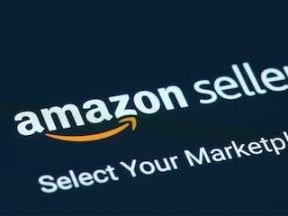Amazon aggregators acquire and try to grow the businesses of marketplace sellers. During Covid, aggregators thrived amid brick-and-mortar shutdowns, attracting huge amounts of capital. But last year many aggregators encountered financial headwinds.
While the acquisitions slowed only slightly in 2022, ecommerce sales declined owing to consumers returning to in-person shopping. Exacerbating the problem are Amazon’s seller fee increases, rising by more than 30% since 2020 and putting a dent in aggregator profits. Some are now laying off staff, merging with other aggregators, and looking for new ways to generate revenue.
Funding
According to CB Insights, after peaking at just over $6 billion in 2021, global funding to Amazon aggregators declined by 88% in 2022, and just five funding deals closed in the first five months of 2023.
About 75% of the funds aggregators have received are loans, not equity investments — for acquisitions, not operations. Most of that money is unused because some larger aggregators have stopped acquiring. Many aggregators pay as much as 18% interest on these loans. Some can’t meet their debt payments.
Aggregators sometimes offer owner-sellers incentives beyond the purchase price. However, over the past year promised performance earn-outs did not always materialize because sales did not reach the threshold or even declined. Two aggregators — SellerX and Perch — have been sued for not honoring their contracts with the selling firms. SellerX was accused of not promoting a brand it bought.
Some owners that sell to aggregators stay around to help. But most move on to something new, relying on the aggregator to generate revenue for performance payouts.
Consolidation
There are currently 93 active global Amazon aggregators according to Marketplace Pulse. The top 25 based on funding raised through May 2023 are:
- Thrasio. Walpole, Mass., $3.4 billion
- Berlin Brands Group. Berlin, Germany, $1.3 billion
- Razor Group. Berlin, Germany, $1.1 billion
- Perch. Boston, Mass., $908 million
- Heyday. San Francisco, $800 million
- Dragonfly. Boston, Mass., $500 million
- Merama. Mexico City, $445 million
- Growve. St. Petersburg, Fla., $400 million
- Benitago Group. New York, $380 million
- Boosted Commerce. Los Angeles, $380 million
- Moonshot Brands. Oakland, Calif., $340 million
- Unybrands. Miami, Fla., $325 million
- GlobalBees. New Delhi, India, $296 million
- The Ambr Group. New York, $273 million
- Heroes. London, U.K., $265 million
- Cap Hill Brands. Seattle, $250 million
- Monolith Brands Group. New York, $230 million
- Mensa Brands. Bangalore, India, $218 million
- Society Brands. Canton, Ohio, $204 million
- Accel Club. Amsterdam, The Netherlands, $170 million
- Olsam Group. London, U.K., $165 million
- Acquco. New York, $160 million
- Nebula Brands. Beijing, China, $156 million
- Branded. Paris, France, $150 million
- Intrinsic. New York, $128 million
Aggregators are addressing the slowdown in funding and reduced revenue in various ways.
Earlier this year California-based Boosted Commerce laid off 20% of its staff. Leading aggregator Thrasio laid off an undisclosed number of employees last year, and the company’s new CEO Greg Greeley told Forbes magazine that Thrasio incorrectly assumed ecommerce demand would remain at pandemic-era levels. Greeley said Thrasio had to “recalibrate expectations” and ensure it’s not holding excessive inventory or offering too-high acquisition prices. Analysts have asserted aggregators overpaid for a high percentage of the merchant brands.
Now aggregators are acquiring each other, often on a global level. In May, Berlin-based SellerX bought Austin-based Elevate Brands. Together the companies will have 80 Amazon marketplace brands and annual sales of $426 million. In April, Razor Group acquired Stryze, two Germany-based aggregators.
Earlier this year two smaller U.S. aggregators merged — Suma and D1 Brands. The combined business, now called The Ambr Group, operates a portfolio of more than 30 businesses, generating over $100 million in annual revenue.
Business Model Changes
The premise of the aggregation model is that it results in economies of scale and more marketing expertise and resources. Initially, once purchased by aggregators small brands did see a surge in sales but much of that likely was attributable to the pandemic shift to ecommerce. Once physical stores re-opened, ecommerce growth stalled, and small sellers looked less attractive to buyers. The estimated valuations of small sellers plummeted, causing some aggregators to pause acquisitions.
Now aggregators are realizing that growing solely through acquisitions is not always sustainable. Some are launching their own brands rather than acquiring existing ones.
Few barriers to entry exist in the aggregator industry. The long-term value of existing companies can decline if the products they sell are commodities. In a crowded market, only aggregators with flawless execution and distinctive products will likely survive.





